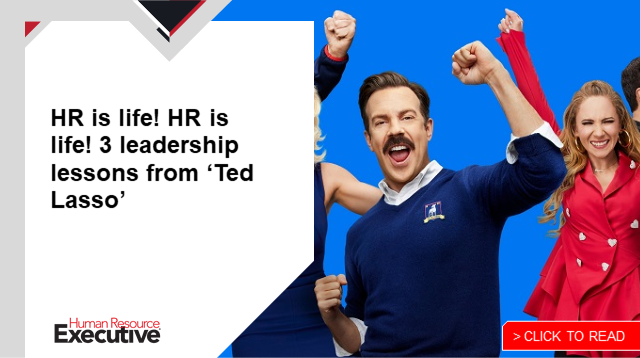“A good beginning makes a good end.”—novelist Louis L’Amour
As we have noted in previous columns, most organizations recognize the imperative for change, with much of that change being driven by the need to update policies, processes and systems to support new ways of working. What HR leaders struggle with more than identifying that need is understanding how to get started.
That goes hand in hand with HR’s historic struggle with strategy. In fact, in 2014, Harvard Business Review made the click-bait argument that strategy shouldn’t be HR’s job. Back in the real world, however, HR is often challenged with balancing administration and vision, and in many organizations the scales tend to tip more towards administration. However, with work continuing to evolve and with a more rounded view of the employee experience coming into focus, HR is called upon to solve for all manner of issues related to the strategic direction of an organization, including the response to broad socioeconomic, geopolitical and cultural challenges. Ironically, HR’s ability to execute transactional work—traditionally an area where HR has excelled—has not always translated into successful outcomes.
 Transformations can be daunting. No matter how much of a mandate HR leadership possesses to make the necessary changes, the task is often an uphill battle as the playing field shifts from month to month (or even hour to hour). To help navigate this ever-evolving landscape, the best thing a transformation leader can do is spend enough time up front building a solid plan. That may seem counterintuitive, given the fact that I just spent time explaining how difficult it is to execute transformation in a fluid landscape, but making the right kind of plan will put you in a position of strength to adapt to whatever the business throws at you.
Transformations can be daunting. No matter how much of a mandate HR leadership possesses to make the necessary changes, the task is often an uphill battle as the playing field shifts from month to month (or even hour to hour). To help navigate this ever-evolving landscape, the best thing a transformation leader can do is spend enough time up front building a solid plan. That may seem counterintuitive, given the fact that I just spent time explaining how difficult it is to execute transformation in a fluid landscape, but making the right kind of plan will put you in a position of strength to adapt to whatever the business throws at you.
Project plans and detailed timelines, such as PMBOK-sanctioned guides from the Project Management Institute, while important, are not going to protect HR’s transformation efforts. To be truly successful, HR should focus on scenario-planning in both the early stages of transformation and throughout the process. Put simply, scenario-planning means thinking through all the possible situations that may befall the program, a sort of pre-mortem to allow the team to anticipate potential roadblocks and brainstorm mitigation activities before panic and reactionism set in. It’s like a real-world game of “What if?”
For instance:
- What if, after your program budget was approved, the world changes and now your budget is at risk? What options would you consider? Would you cancel the program? Focus efforts on elements that don’t require additional spending? What would that look like?
- What if one of the key people of the transformation decides to leave? Are responsibility and oversight appropriately distributed on the project team? Do you have the bench strength to absorb the loss of key skill sets? Do you think a key-person dependency is a good approach?
- What if HR or organizational priorities shift? Are you prepared to apply prioritization criteria and accept the de-prioritization of your transformation? Are you able to reframe the transformation into smaller, incremental changes? How will you position the team to honestly assess the transformation’s priority throughout the process?
- What if the business acquires another entity, divests a business unit or is itself acquired? What if a new strategic plan emerges that accelerates or decelerates the timing and expected outcomes of the program?
- What if your external technology, consulting or change management partners experience some material change to their personnel, tooling, service or support models? What if their performance and timeliness lags, SLAs are missed or roadmap is delayed?
Learning to embrace “What if?” scenario-planning can be a powerful way to regain a sense of control, including in the most volatile environment. Even if your scenarios don’t cover every single situation, they comprise a playbook you can either use as a building block for your action plan or to bolster your confidence that you can meet any challenges reality throws your way.
 Scenario-planning is not sufficient on its own to ensure a successful transformation. What it does do is establish another foundation upon which all the other work can build. When combined with a robust stakeholder management and engagement model, a continuous improvement mindset, a technology-enabled design and an understanding of the catalyst that got you to the starting line in the first place, the level of planning will help future-proof you and your project team against whatever comes your way. You might also be able to set your device aside, take a vacation and prioritize your wellbeing without fear that you’ll be caught flat-footed when the universe throws a wrench into your transformation.
Scenario-planning is not sufficient on its own to ensure a successful transformation. What it does do is establish another foundation upon which all the other work can build. When combined with a robust stakeholder management and engagement model, a continuous improvement mindset, a technology-enabled design and an understanding of the catalyst that got you to the starting line in the first place, the level of planning will help future-proof you and your project team against whatever comes your way. You might also be able to set your device aside, take a vacation and prioritize your wellbeing without fear that you’ll be caught flat-footed when the universe throws a wrench into your transformation.
Next time, we’ll focus on process optimization and why we believe it is a foundational element of any transformation.
The post Getting started with change: the power of ‘what if?’ thinking appeared first on HR Executive.